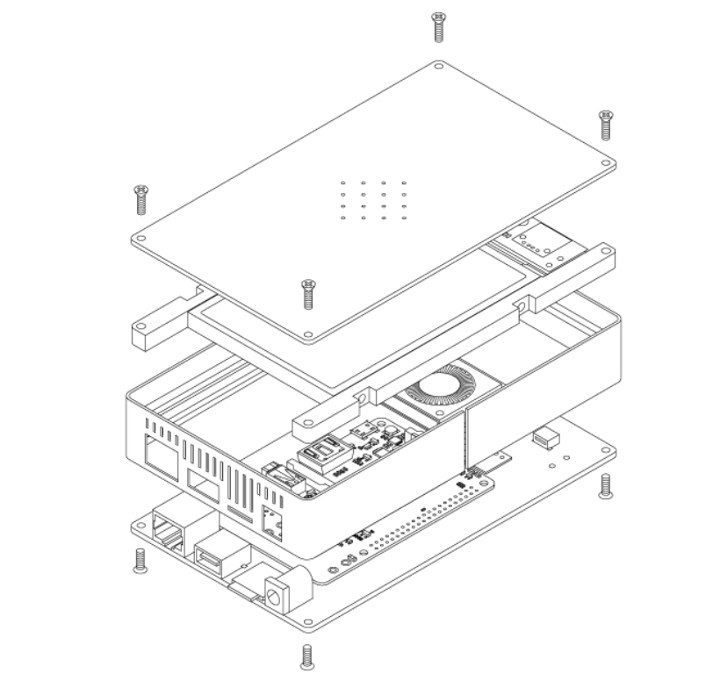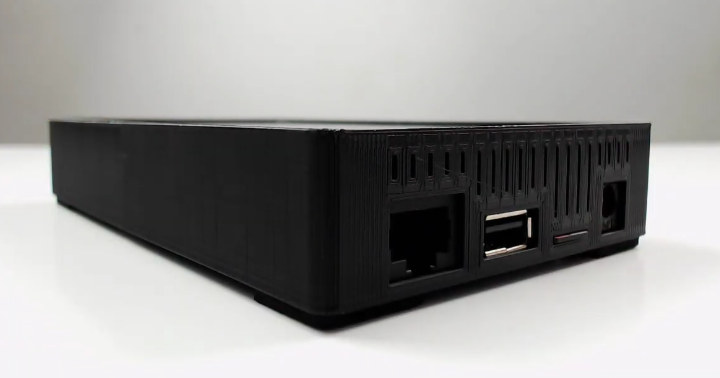We’ve previously covered networked hard drive enclosures with Ethernet and/or WiFi running OpenWrt or Ubuntu that allows you to easily and fairly cheaply connect SATA drives to your local network with models such as Blueendless X3.
NODE has done something similar with a DIY project featuring a Raspberry Pi 3 Model B+. NODE Mini Server V2 connects the popular SBC to a 2.5″ SATA hard drive over USB and is designed to build out the physical infrastructure for the decentralized web (e.g. IPFS) that would allow users to replace remote servers with nodes that they themselves own and operate. Having said that nothing would prevent you from using this as a simple NAS although performance will not be as optimal as the aforementioned products due to the lack of SATA or USB 3.0 interface, as well as having “Gigabit” Ethernet limited to 300 Mbps. Having said that the design could also be easily be adapted to one of the Raspberry Pi alternatives with the same factor but with “full” Gigabit Ethernet and USB 3.0 ports such as Rock64 or Rock Pi 4 SBCs.
Main parts used in Node Mini Server V2:
- 3D printed case and HDD/SSD frame
- Raspberry Pi 3B+ board stripped from all USB ports, Ethernet port, and GPIO headers
- Four custom PCBs
- Bottom PCB with 1x USB port, 1x Ethernet port, microSD slot, and DC power jack
- Top “PCB” acting as a heatsink (optionally aluminum based)
- Micro SD Card adapter port
- USB to SATA adapter PCB
- 2.5″ HDD or SSD with 7mm thickness
- Various screws and nuts, as well as self-adhesive rubber feet
- Various FPC cables
- 1x S8050 Transistor
- 30x10x10mm 5v Blower Fan
 Putting everything together requires a fair amount of work, as you need to desoldering connectors from the Raspberry Pi, solder boards together, and other tasks required in the assembly. Currently, you’d also have to manufacture your own PCB and print the 3D parts yourself with the PCB Gerber and STL files available here.
Putting everything together requires a fair amount of work, as you need to desoldering connectors from the Raspberry Pi, solder boards together, and other tasks required in the assembly. Currently, you’d also have to manufacture your own PCB and print the 3D parts yourself with the PCB Gerber and STL files available here.
NODE may open a limited preorder for NODE Mini Server 2 depending on the response from the community, but he’s also open to others start making them, so you may not have to build it all it from scratch. You’ll find the build instructions in the video below at the 4:50 mark, or if you prefer to read a transcript you’ll find it on NODE website.
Via Liliputing and MiniMachines

Jean-Luc started CNX Software in 2010 as a part-time endeavor, before quitting his job as a software engineering manager, and starting to write daily news, and reviews full time later in 2011.
Support CNX Software! Donate via cryptocurrencies, become a Patron on Patreon, or purchase goods on Amazon or Aliexpress





